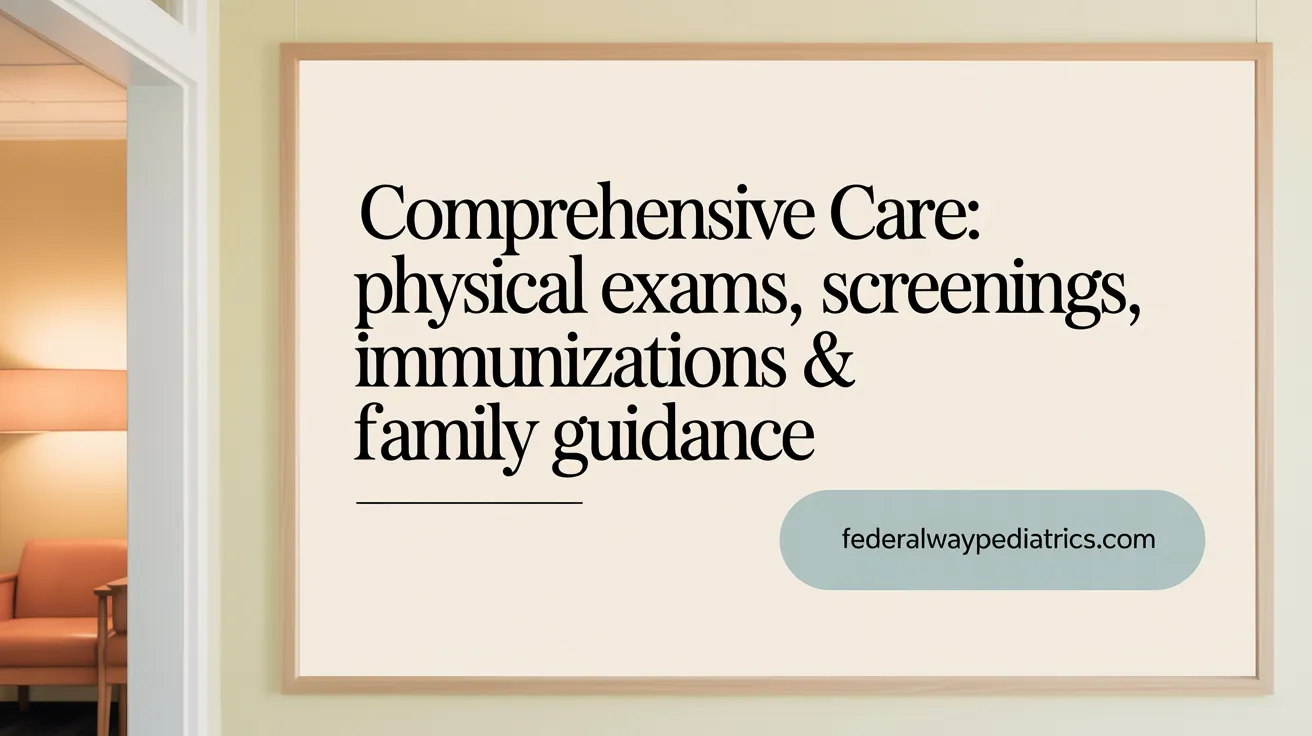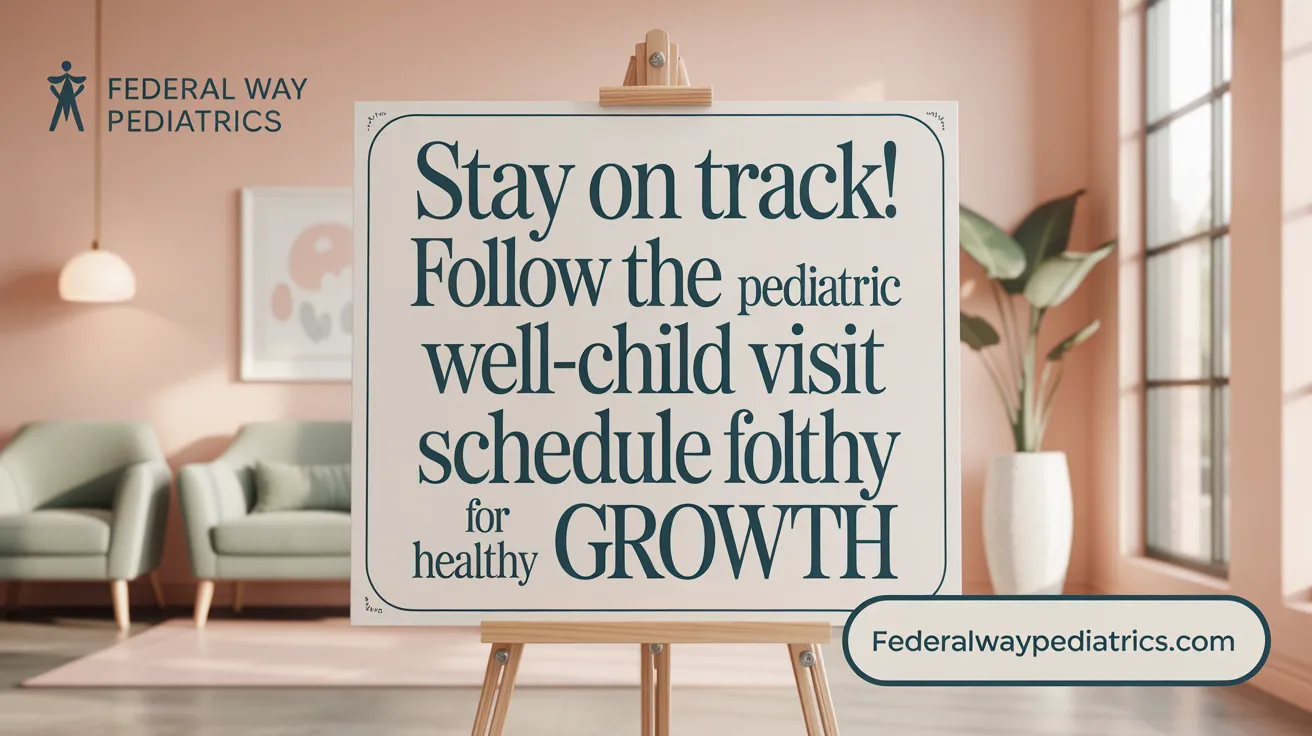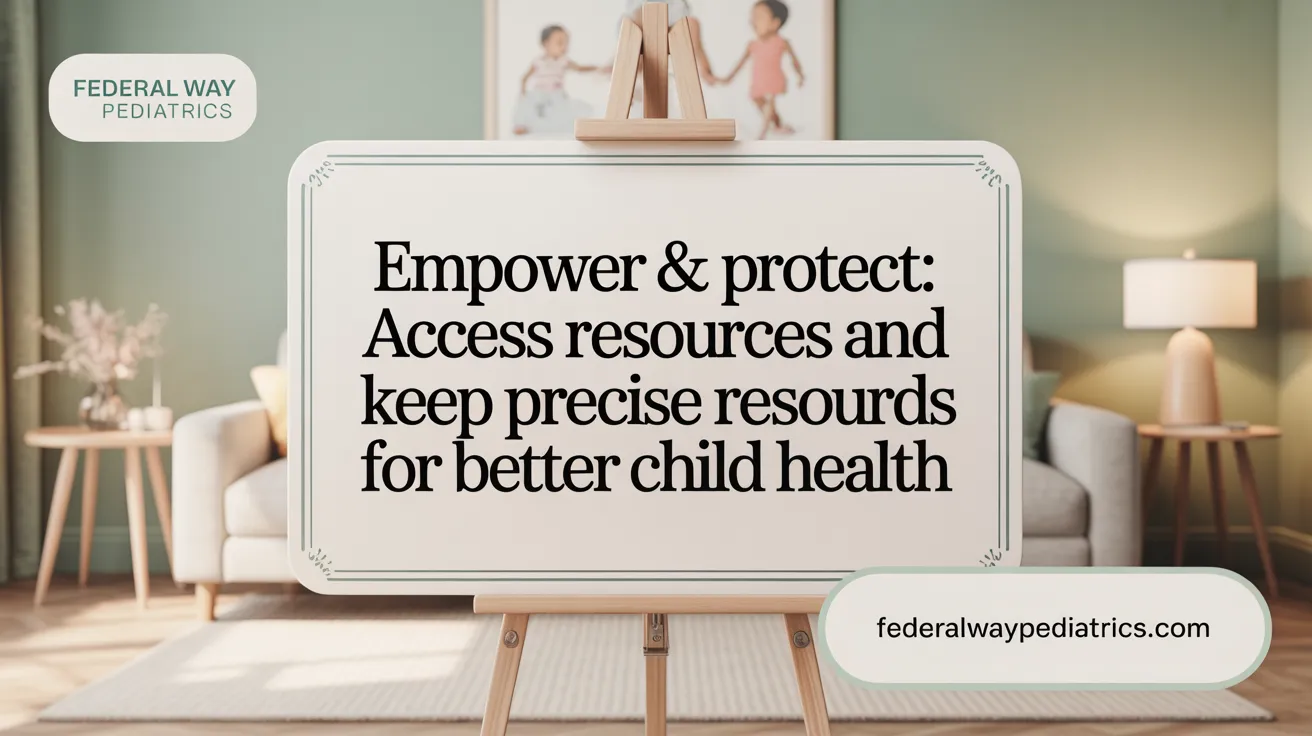Introduction to Well-Child Visits
Well-child visits are scheduled medical appointments that play a vital role in ensuring the healthy development and well-being of children from infancy through adolescence. These visits encompass a comprehensive approach to monitoring a child's growth, developmental milestones, preventive immunizations, and overall health. Rooted in guidelines from leading organizations such as the American Academy of Pediatrics (AAP), well-child visits serve as key opportunities for healthcare providers and families to collaborate in promoting optimal physical, emotional, and social health. This article explores the core components, benefits, schedules, and strategies associated with well-child care to illuminate their indispensable role in child healthcare.
<!-- VIDEO:eyJsaW5rIjoiaHR0cHM6Ly93d3cueW91dHViZS5jb20vd2F0Y2g/dj1TMWczSXktV20yUSIsImltYWdlVXJsIjoiaHR0cHM6Ly9lbmNyeXB0ZWQtdGJuMC5nc3RhdGljLmNvbS9pbWFnZXM/cT10Ym46QU5kOUdjUzMwTGVWdVZTaklOTUZmaEJQNGdoeXRFcWdKam9xSGVFaDl4LUtwWEVyVi1PYiZzIiwidGl0bGUiOiJJbXBvcnRhbmNlIG9mIFdlbGwtQ2hpbGQgVmlzaXRzIC0gQm95cyBUb3duIFBlZGlhdHJpY3MiLCJzbmlwcGV0IjoiV2VsbCB2aXNpdHMgYXJlIGltcG9ydGFudCB0aHJvdWdob3V0IHlvdXIgY2hpbGQncyBkZXZlbG9wbWVudCBhbmQgZ3Jvd3RoLiBQZWRpYXRyaWNpYW5zIHNjcmVlbiBmb3IgYWdlLXNwZWNpZmljIGlzc3VlcywgbWVhc3VyZSBncm93dGgsIGFuZCBwZXJmb3JtIHRob3JvdWdoIHBoeXNpY2FsIGV4YW1zLiJ9 -->Core Components of Well-Child Visits
 Well-child visits encompass several important elements designed to promote healthy growth and early detection of potential health issues. The fundamental aspect of these visits is the physical examination, during which healthcare providers assess vital signs, check the child's overall physical condition, and measure growth parameters like height, weight, and head circumference. These measurements are recorded on standardized growth charts to monitor development over time.
Well-child visits encompass several important elements designed to promote healthy growth and early detection of potential health issues. The fundamental aspect of these visits is the physical examination, during which healthcare providers assess vital signs, check the child's overall physical condition, and measure growth parameters like height, weight, and head circumference. These measurements are recorded on standardized growth charts to monitor development over time.
In addition to physical exams, developmental and behavioral screenings are conducted to evaluate milestones such as speech, motor skills, social interactions, and cognitive development. These screenings help in early identification of delays or conditions like autism spectrum disorder or learning disabilities.
A crucial part of every well-child visit is administering age-appropriate immunizations, which shield children from preventable diseases such as measles, mumps, and whooping cough. These are scheduled according to guidelines provided by health authorities like the CDC immunization schedules.
Screenings for medical conditions—including anemia, lead exposure, hearing impairments, and vision problems—are performed based on the child's age and risk factors. Early detection of these conditions can lead to timely interventions (screenings overview).
Parents are engaged in anticipatory guidance that includes education on nutrition, safety practices, sleep hygiene, and health habits suitable for the child's developmental stage. Discussions often cover topics like injury prevention, dental health, screen time limits, and behavioral health.
Family-centered care is emphasized, encouraging parental involvement and addressing family concerns. The provider discusses developmental progress, answers questions, and offers tailored advice to support the child's wellbeing.
Proper documentation is vital, capturing all assessments, immunizations, screenings, and parental concerns, which guides follow-up planning and ensures continuity of care.
Overall, well-child visits serve as a comprehensive approach to fostering optimal health, combining preventive screenings, health education, and family support to promote the child’s physical, mental, and social development.
Benefits and Importance of Regular Well-Child Visits

What are the benefits of well-child visits for children's health and development?
Well-child visits are crucial for promoting children's health and growth by providing preventive care such as immunizations, screenings, and health assessments. These visits help in early detection of illnesses, developmental delays, or behavioral issues, enabling timely interventions that can significantly improve health outcomes. They also offer a dedicated time for parents to ask questions about nutrition, safety, sleep, and social behaviors. Building a trusting relationship with healthcare providers during these regular visits ensures personalized guidance tailored to each child's age and needs. Furthermore, well-child visits contribute to ongoing monitoring of growth charts, vision, hearing, and exposure to health hazards like lead, supporting both physical and mental well-being. Overall, these checkups lay a stable foundation for lifelong health.
Why are regular health checkups important for early detection of medical or behavioral issues in children?
Routine health checkups are vital for early detection because they allow pediatricians to monitor developmental milestones and identify subtle signs of health problems before they become serious. During these visits, focused screenings for vision, hearing, anemia, and other conditions are performed, often catching issues that are not immediately apparent. Early intervention can prevent disease progression, reduce the need for complex treatments later, and improve developmental trajectories. Advances such as newborn screening tests and predictive models further enhance early diagnoses. Regular checkups also create opportunities for addressing parental concerns, including behavioral or mental health issues, ensuring children receive support when they need it most. This proactive approach helps maintain optimal health and supports healthy development.
Why are well-child visits overall important in promoting optimal child health and development?
Overall, well-child visits are a cornerstone of pediatric healthcare because they integrate preventive, developmental, and behavioral health into a single, ongoing process. They facilitate the timely administration of vaccines to protect against contagious diseases, while screening for issues like vision or hearing loss ensures prompt correction or treatment. These visits also strengthen the partnership between families and healthcare providers, allowing personalized advice on nutrition, activity, safety, and emotional well-being. Detecting developmental delays early enables early intervention, which can drastically improve a child's learning and social skills. Consistent visits help establish a routine that promotes a sense of security and health awareness, supporting children’s physical, mental, and social growth throughout childhood and adolescence. Ultimately, they serve as a proactive strategy to ensure every child reaches their full potential in health and development.
Recommended Schedule and Guidelines for Well-Child Visits

What is the recommended schedule for pediatric well-child visits?
The schedule for pediatric well-child visits is guided by the American Academy of Pediatrics (AAP) well-child care schedule and is designed to promote optimal health from infancy through adolescence. Initially, infants require frequent checkups at 3 to 5 days after birth, then at 1, 2, 4, 6, 9, and 12 months of age. Additional visits are scheduled at 15 and 18 months, and then at 2 and 2.5 years. From age 3 onward, well-child visits are generally held annually until age 21. These visits are essential for tracking growth through measurements on growth charts, detecting developmental milestones, administering necessary immunizations, and screening for health issues such as lead exposure, anemia, or autism.
As children grow, the focus of visits expands to include social, emotional, and behavioral assessments, along with preventive guidance on topics like safety, nutrition, and mental health. Regular checkups at these intervals allow for early identification and intervention for health concerns, fostering strong relationships between pediatricians, children, and their families (Benefits of Regular Well-Child Visits).
What guidelines do organizations such as the American Academy of Pediatrics provide regarding pediatric checkups?
The American Academy of Pediatrics (AAP) offers comprehensive, evidence-based guidelines designed to optimize preventive pediatric health care. These guidelines are compiled in the 'periodicity schedule,' which specifies the timing, content, and frequency of well-child visits from birth through adolescence. The schedule emphasizes the importance of timely immunizations, developmental screening, behavioral assessments, and health counseling.
AAP guidelines recommend thorough physical exams, monitoring growth with standardized charts, and performing specific screenings—such as autism screening at 18 and 24 months, lead testing in high-risk groups, and depression screening at appropriate ages. The guidelines also advocate for parental involvement, addressing concerns about sleep, safety, and social development. Regularly updated to incorporate the latest research and best practices, these guidelines aim to deliver consistent, high-quality preventive care that adapts to individual health needs and promotes overall well-being (Well-Child Visits Overview).
| Schedule Point | Age Range | Focus Areas | Additional Details |
|---|---|---|---|
| Initial Visits | Birth to 1 Year | Growth, Vaccinations, Screening | Checkups at 3-5 days, 1, 2, 4, 6, 9, 12 months (AAP Schedule of Well-Child Care Visits) |
| Toddler and Preschool | 15 months to 5 years | Development, Safety, Immunizations | Visits at 15, 18 months, then annually at 3, 4, 5 years (Well-child visits overview) |
| School Age | 6-12 years | Growth, Behavioral, Immunizations | Regular assessments and screenings for vision, hearing (Well-child screenings and assessments) |
| Adolescence | 13-21 years | Mental health, Reproductive health, Immunizations | Focus on lifestyle, mental health, vaccination updates (Pediatric well-child assessments) |
Understanding and adhering to the scheduling guidelines provided by the AAP ensures children receive comprehensive preventive care, tailored to their developmental stage and health risks.
Strategies to Improve Attendance and Enhance Well-Child Care Quality
 Addressing the barriers that hinder consistent attendance at well-child visits is essential for improving child health outcomes. Common obstacles such as transportation issues, work commitments, and lack of childcare can prevent families from keeping up with recommended well-child visits. Disparities are especially evident among socio-economic and ethnic groups, where factors like poverty, language barriers, and limited access to services contribute to lower attendance rates.
Addressing the barriers that hinder consistent attendance at well-child visits is essential for improving child health outcomes. Common obstacles such as transportation issues, work commitments, and lack of childcare can prevent families from keeping up with recommended well-child visits. Disparities are especially evident among socio-economic and ethnic groups, where factors like poverty, language barriers, and limited access to services contribute to lower attendance rates.
To mitigate these challenges, healthcare providers and systems employ various strategies. Automated reminders via SMS, phone calls, or digital applications serve as effective tools to prompt families about upcoming appointments. Offering flexible scheduling, including evening or weekend slots, helps accommodate parents' busy lives. Outreach efforts that are culturally sensitive and family-centered—incorporating translation services and tailored communication—build trust and ensure that diverse communities feel supported.
Implementation of quality improvement initiatives by healthcare organizations and the Centers for Medicare & Medicaid Services (CMS) plays a crucial role. These initiatives focus on system-level changes such as electronic medical record (EMR) enhancements for better tracking, staff training to emphasize the importance of preventive care, and incentivizing providers based on attendance metrics. Community engagement through education campaigns and collaboration with local organizations further promotes awareness about the importance of regular well-child care.
Ultimately, combining these approaches—removing logistical barriers, fostering cultural competence, utilizing technology, and promoting continuous quality improvement—can significantly increase attendance rates. Coordinated efforts among healthcare providers, policymakers, and community stakeholders are vital to ensuring that all children receive timely preventive care, which is foundational for healthy development and disease prevention.
Educational Resources, Anticipatory Guidance, and Documentation Practices
 During well-child visits overview, healthcare providers offer tailored educational resources and anticipatory guidance designed to support both parents and children across different stages of development. These resources include detailed information about age-specific well-child nutrition guidance, safety measures, sleep practices, screen time limitations, dental health, and physical activity, often supplemented by materials from organizations like Bright Futures Program. The guidance aims to prepare parents for upcoming developmental milestones check, address existing concerns, and promote healthy behaviors at home.
During well-child visits overview, healthcare providers offer tailored educational resources and anticipatory guidance designed to support both parents and children across different stages of development. These resources include detailed information about age-specific well-child nutrition guidance, safety measures, sleep practices, screen time limitations, dental health, and physical activity, often supplemented by materials from organizations like Bright Futures Program. The guidance aims to prepare parents for upcoming developmental milestones check, address existing concerns, and promote healthy behaviors at home.
In addition to education, standard procedures involve comprehensive physical exam components, measurement of vital signs, and growth assessments plotted on CDC growth charts. Formal developmental screenings for autism at 18 and 24 months, lead poisoning risk assessments, vision and hearing tests, and anemia screenings are integral components. Documentation of these assessments includes recording health history, growth metrics, screening outcomes, immunization updates, and counseling provided. Accurate record-keeping ensures continuity of care and adherence to preventive guidelines.
To uphold quality, providers utilize standardized templates and coding systems for documentation. These templates facilitate consistent recording of health assessments, screenings, and anticipatory guidance services. Proper documentation supports interpretability for other healthcare professionals, billing accuracy, and compliance with clinical standards as outlined in Well-Child Care curriculum.
Supporting parental involvement and culturally competent care is essential. Providers ensure that educational materials are accessible, culturally relevant, and available in multiple languages when needed. Engaging parents actively during visits fosters trust, encourages adherence to health recommendations, and enhances the effectiveness of preventive care strategies, ultimately promoting optimal health outcomes for children as emphasized in pediatrician-parent-child team approach and family-clinician relationships.
Conclusion: Ensuring Lifelong Health Through Well-Child Visits
Well-child visits are foundational to promoting and maintaining children's health, growth, and development from birth through adolescence. Through comprehensive physical exams, immunizations, developmental screenings, and personalized guidance, these routine appointments empower parents and healthcare providers to collaborate in preventing illnesses and addressing concerns early. Adhering to recommended schedules based on authoritative guidelines such as those from the American Academy of Pediatrics ensures children receive timely, age-appropriate care. Overcoming barriers through targeted strategies can improve attendance and equity in well-child care. Ultimately, well-child visits are more than routine checkups—they are essential investments in a child's lifelong physical, emotional, and social well-being.
